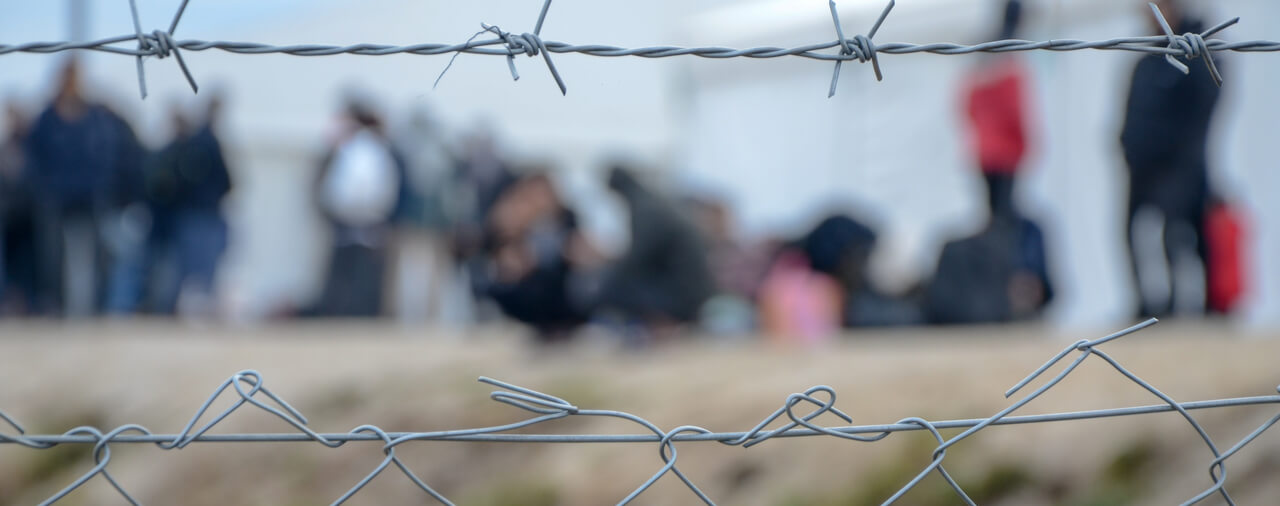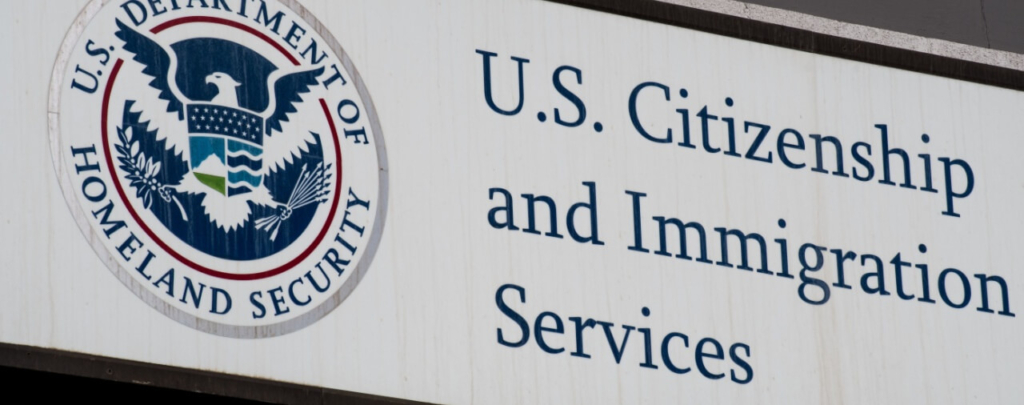In November of 2016, the DHS released its Annual Flow Report for refugees and asylees [PDF version].1 The Annual Flow Report includes numerous statistics and facts regarding refugee and asylees in Fiscal Year-2015. In this article, we will examine a selection of the statistics from the Annual Flow Report, which is well-worth reading in its entirety.
Please see my blog posts about the DHS Annual Flow Reports on nonimmigrants [see blog] and naturalizations [see blog].
Proposed and Actual Refugee Admissions
In FY-2015, the proposed ceiling for refugee admissions was 70,000. The United States ended up admitting 69,920 refugees, nearly hitting the ceiling. The actual number of refugees admitted was nearly identical to FY-2014 (69,975) and FY-2013 (69,909).
In addition to the total proposed ceiling, the Department of State proposes targets by region in each fiscal year. The targets were as follows for FY-2015:
Africa — 17,000
East Asia — 13,000
Europe/Central Asia — 1,000
Latin America/Caribbean — 4,000
Near East/South Asia — 33,000
Unallocated Reserve – 2,000
In FY-2015, the actual admissions for the first three regions exceeded their targets. 22,472 refugees were admitted from Africa, 18,456 from East Asia, and 2,363 from Europe/Central Asia. Conversely, the latter two regions saw significantly fewer refugee admissions than their targets. Only 2,050 refugees were admitted from Latin America/Caribbean and 24,579 from Near East/South Asia (8,421 short of the target). The unallocated reserve was not tapped into in FY-2015.
In FY-2014 and FY-2013, actual refugee admissions were more in line with the ceilings. Africa exceeded its initial ceiling in both years as did East Asia in FY-2014, but each did so by smaller margins than t in FY-2015. Perhaps as a result of the large number of refugees admitted from those two regions, Near East/South Asia saw a significant drop in FY-2015, after having had just over 32,000 refugee admissions in FY-2014 and FY-2013. The Latin America/Caribbean region saw 4,318 and 4,439 refugees admitted in FY-2014 and FY-2013, respectively, but less than half of that in FY-2015. The largest percent increase in refugees in FY-2015 was for Europe/Central Asia. This region saw a combined total of 1,539 refugees admitted in FY-2014 and FY-2013, fewer than the 2,363 admitted in FY-2015 alone.
Refugee Arrivals by Country of Nationality
The following is the list of the top 10 countries of nationality for refugee arrivals in FY-2015 (by percent of the total):
1. Burma — 26.3%
2. Iraq — 18.1%
3. Somalia — 12.7%
4. Democratic Republic of the Congo — 11.3%
5. Bhutan — 8.3%
6. Iran — 4.4%
7. Syria — 2.4%
8. Eritrea — 2.3%
9. Sudan — 2.3%
10. Cuba – 2.2%
The remaining 9.8% came from other countries (including “unknown”). In FY-2014 and 2013, Iraq was the largest source of refugees of any individual country, with Burma following in second. However, Iraq saw a marked decrease in FY-2015 with approximately 7,000 fewer refugees arriving from that country than in the previous two years. Bhutan and Cuba also experienced significant decreases in FY-2015. Burma and the Democratic Republic of the Congo saw more than 3,000 additional refugees in FY-2015 than in the previous year. The most dramatic increase in percentage terms came from Syria, with 1,682 refugees arriving in FY-2015 after only 141 in the previous two fiscal years combined.
Asylum
26,124 individuals were granted asylum in FY-2015. Of these, 17,878 were granted asylum affirmatively, and 8,246 were granted asylum defensively. FY-2015 saw a slight increase in the number of individuals granted asylum from FY-2014 (23,374) and FY-2013 (25,151). However, the increase is not uniform. FY-2014 and FY-2013 saw more individuals granted asylum defensively (3,980 and 4,535 respectively) than were granted in FY-2015. FY-2015’s greater number of total asylum grants over the previous two years reflected the increased number of affirmative asylum grants, which more than made up for the decrease in defensive asylum grants.
The following are the top 10 countries of nationality of individuals granted asylum in FY-2015 (by total of affirmative and defensive asylum grants):
1. People’s Republic of China — 6,192
2. El Salvador — 2,173
3. Guatemala — 2,082
4. Egypt — 1,666
5. Honduras — 1,416
6. Syria — 974
7. Ethiopia — 879
8. Mexico — 870
9. Iraq — 766
10. Iran – 674
Nationals of countries not listed, including cases marked on the chart as unknown, were granted asylum in 8,432 cases, representing 32.3% of the total. China’s 6,192 represented 23.7% of that total. El Salvador, Guatemala, and Honduras saw dramatic increases in the number of asylum grants in FY-2015. None of these three countries exceeded Honduras’s 486 nationals granted asylum in either FY-2014 or 2013, but each saw a dramatic spike in asylum grants in FY-2015. Please see my blog to learn more about the security situation on the Southwest border [see blog]. China and Egypt each saw significant decreases in the number of asylum cases granted in FY-2015 relative to the previous two years.
The following are the top 10 countries of nationality of individuals granted asylum affirmatively in FY-2015:
1. People’s Republic of China — 2,582
2. El Salvador — 1,870
3. Guatemala — 1,713
4. Egypt — 1,517
5. Honduras — 1,109
6. Syria — 873
7. Iraq — 711
8. Mexico — 667
9. Iran — 640
10. Ethiopia – 624
Individuals from countries not listed were granted asylum affirmatively on 5,572 occasions, constituting 31.2% of the total of affirmative asylum grants. China represents only 14.4% of affirmative asylum grants, showing that the bulk of Chinese asylum grants come in defensive asylum cases. Conversely, the vast majority of asylum grants to individuals from El Salvador, Guatemala, and Honduras are in affirmative asylum cases.
The following are the top 10 countries of nationality of individuals granted asylum defensively in FY-2015:
1. People’s Republic of China — 3,610
2. Guatemala — 369
3. Honduras — 307
4. El Salvador — 303
5. India — 303
6. Ethiopia — 255
7. Nepal — 253
8. Mexico — 203
9. Soviet Union — 176
10. Somalia – 166
Nationals of countries not listed (including those of unknown nationality) were granted asylum defensively in 2,301 cases, representing 27.9% of all defensive asylum grants in FY-2015. 43.8% of all individuals granted asylum defensively were nationals of China. Interestingly, four countries — India, Nepal, Mexico, and the former Soviet Union — appear on the defensive asylum top 10 but not in the overall top 10, reflecting the fact that there were significantly more individuals granted asylum affirmatively than defensively in FY-2015.
Conclusion
The refugee and asylum statistics on the Annual Flow Report are highly interesting, and the full document includes statistics that we do not discuss in this post, such as following-to-join statistics for asylees, and where individuals granted asylum resided in the United States. Interestingly, in FY-2015, 12.5% of all individuals granted asylum affirmatively resided in New York (second most of any state) and 4.8% resided in New Jersey (fourth most of any state).
To learn about the complicated process for seeking asylum or refugee protection in the United States, please see the full section on our website [see category]. We also discuss other forms of relief and protection such as statutory withholding of removal [see article], protection under the Convention Against Torture [see article], and Temporary Protected Status (TPS) [see category].





